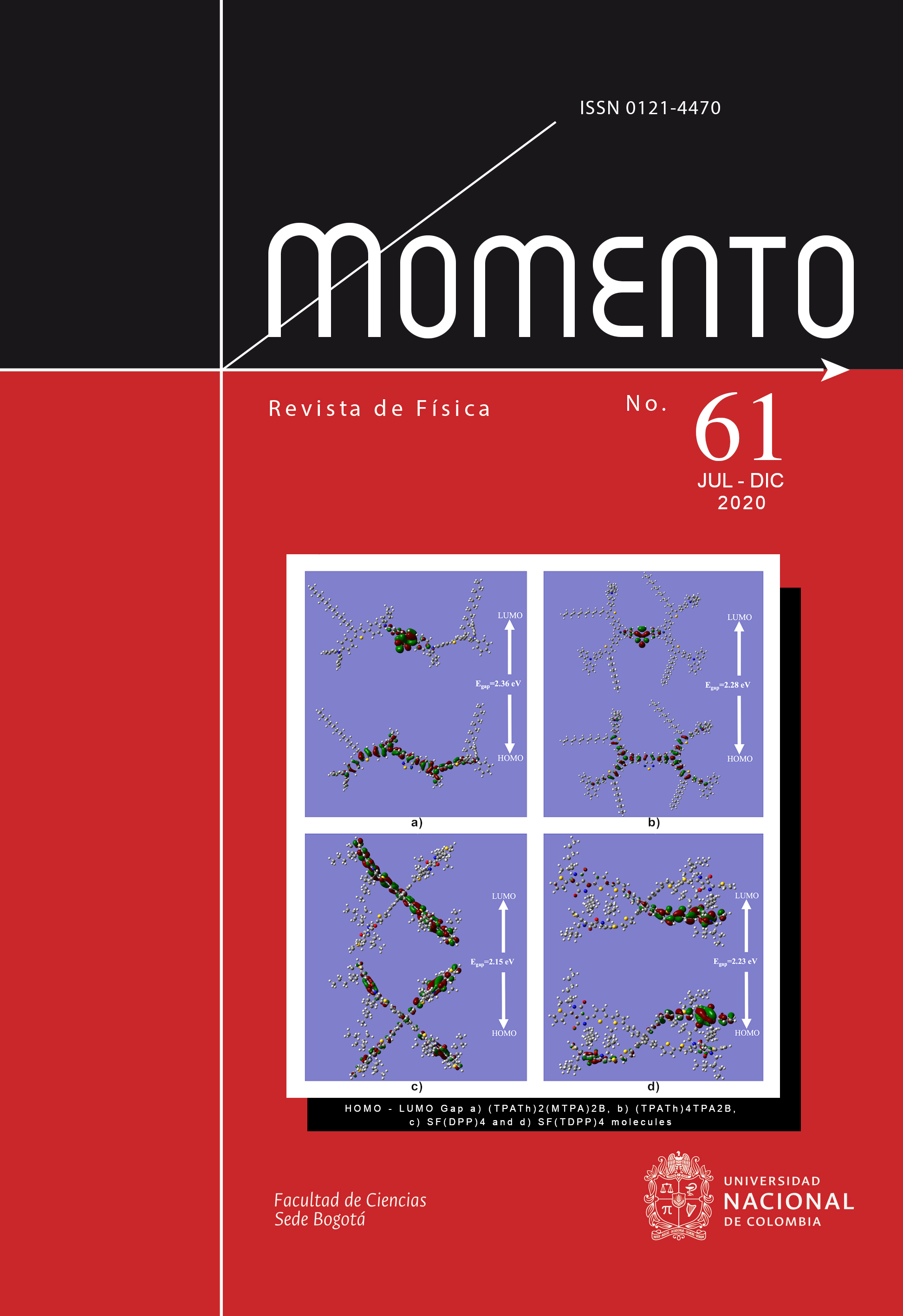TÉCNICA DE INDENTACIÓN ESFÉRICA EN RÉGIMEN ELÁSTICO MEDIANTE EL MEF
SPHERICAL INDENTATION TECHNIQUE IN ELASTIC REGIME THROUGH FEM
DOI:
https://doi.org/10.15446/mo.n61.84058Keywords:
Indentación esférica, ecuaciones analíticas de Hertz, método de elementos finitos (es)Spherical indentation, Hertz analytical equations, finite element method (en)
Downloads
En los últimos años se han desarrollado nuevas técnicas para el estudio de materiales, entre las cuales se destaca la técnica de indentación. Los datos experimentales logrados por esta técnica permiten la evaluación del comportamiento mecánico del material a distintos niveles microestructurales. Recientemente, los avances informáticos han permitido la evolución de herramientas que permiten evaluar y predecir el comportamiento de distintos fenómenos físicos con el desarrollo de los métodos matemáticos, entre los cuales se encuentran los llamados métodos numéricos. El presente trabajo estudia el modelado numérico por elementos finitos de la técnica de indentación para su aplicación en la estimación de la curva carga vs desplazamiento; se revisan los fundamentos de la técnica con el objeto de establecer condiciones de borde a las cuales deberá estar sujeto el modelo numérico propuesto, donde un modelo computacional representativo a la técnica de indentación esférica cumple la finalidad de validar al modelo geométrico propuesto a partir de las ecuaciones analíticas de Hertz.
In recent years new techniques have been developed for the study of materials, among which the indentation technique stands out. The experimental data obtained by this technique allow the evaluation of the mechanical behavior of the material at different microstructural levels. Recently, computer advances have allowed the evolution of tools that allow evaluating and predicting the behavior of different physical phenomena with the development of mathematical methods, among which are the so-called numerical methods. The present work studies the numerical modeling by finite elements of the indentation technique for its application in the estimation of the load vs. displacement curve; reviews the basics of the technique in order to establish the boundary conditions which must be subject the numerical model proposed. Where a computational model representative of the spherical indentation technique fulfills the purpose of validating the proposed geometric model based on the Hertz analytical equations.
References
K. Jhonson, Contact Mechanics (Cambridge University Press, 1985). pp.84-106.
A. Fischer, Introduction to Contact Mechanics (Springer, 2007). pp.101-199.
M. Mata, M. Anglada, J. Alcalá, in Memorias del VIII Congreso Nacional de Propiedades Mecánicas de Sólidos (2002) pp. 513-522.
B. Kang, Z. Yao, E. Barbero. Post-Yielding Stress-Strain Determination Using Spherical Indentation. Mechanics of Advanced Materials and Structures. Vol. 13, pág. 129-138 (2006)
Y. Bao, G. Chai, X. Lou, and W. Hao, Multiscaling Associated with Structural and Material Integrity under Elevated Temperature, International Fracture Mechanics Proceedings (East China University of Science and Technology Publishing House, 2006) pp. 397-404.
R. Budynas, K. Nisbett, Diseño en ingeniería mecánica de Shigley (McGraw-Hill, 2008) pp 117-121.
J. He and S. Veprek, Surf. Coat. Technol. 163-164, 374 (2003).
J. M. Meza, C. A. Chaves, and J. M. Velez, Dyna 73 (2006).
W. Yan, Q. Sun, and H.-Y. Liu, Mat. Sci. Eng. A 425, 278 (2006).
D. Esque de los Ojos, Una ecuacion de dureza unicada para ensayos de indentacion esferica., Master's thesis, Universitat Politecnica de Catalunya (2006).
MATWEB, Overview of materials for aisi 4000 series steel." (Consultada el 10 de mayo de 2020).
ABAQUS, Abaqus analysis user's manual (v 6.6)," (Consultada el 8 de mayo de 2020).
Z. A. da Fonseca Lopes, El Método de los elementos finitos: Una introducción (Fondo Editorial Biblioteca Universidad Rafael Urdaneta, 2011).
M. R. VanLandingham, J. Res. Natl. Inst. Stand. Technol. 108, 249 (2003).
J. He and S. Veprek, Surf. Coat. Technol. 163-164, 374 (2003).
How to Cite
APA
ACM
ACS
ABNT
Chicago
Harvard
IEEE
MLA
Turabian
Vancouver
Download Citation
License
Copyright (c) 2020 MOMENTO

This work is licensed under a Creative Commons Attribution-NoDerivatives 4.0 International License.
Those authors who have publications with this journal, accept the following terms:
a. The authors will retain their copyright and will guarantee the publication of the first publication of their work, which will be subject to the Attribution-SinDerivar 4.0 International Creative Commons Attribution License that permits redistribution, commercial or non-commercial, As long as the Work circulates intact and unchanged, where it indicates its author and its first publication in this magazine.
b. Authors are encouraged to disseminate their work through the Internet (eg in institutional telematic files or on their website) before and during the sending process, which can produce interesting exchanges and increase appointments of the published work.




















